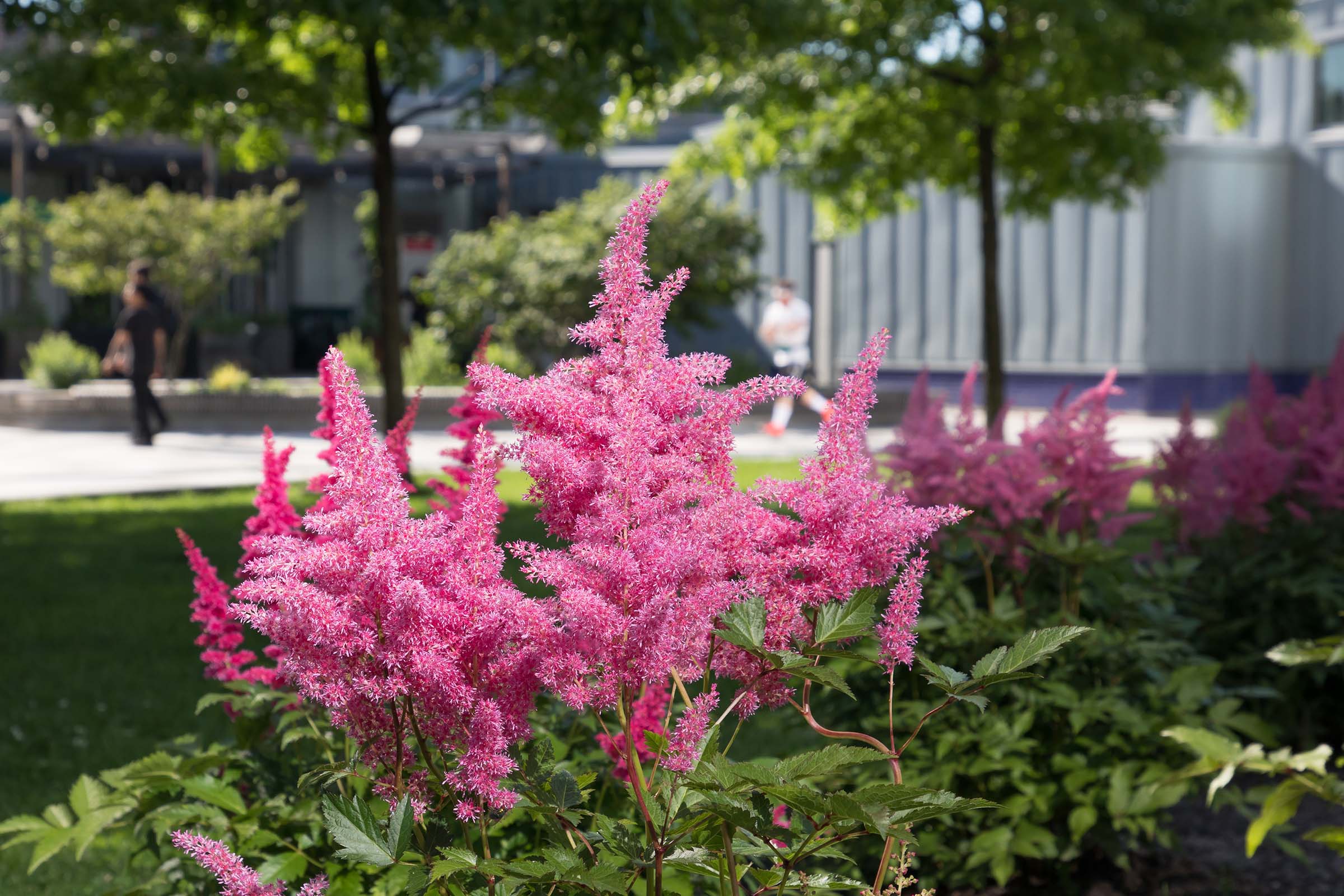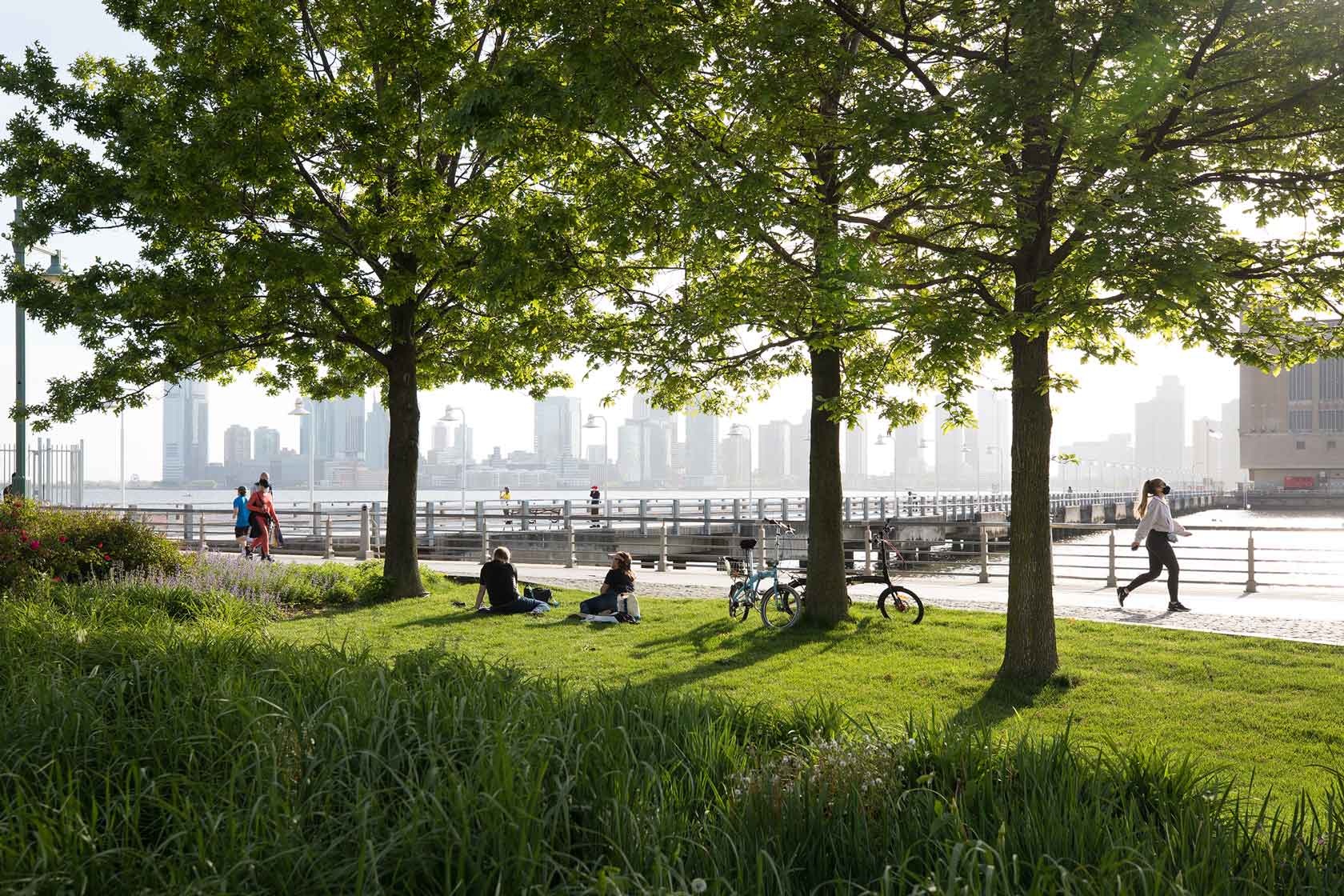This southernmost section of the Park offers visitors a place to explore formal perennial gardens, lush lawns and a meandering boardwalk through native grasses, flowers and trees.

The Tribeca/Hudson Square landscape stretches from just north of Chambers Street to Pier 40 and provides great views of New York Harbor. Inland from the esplanade, an undulating Native Boardwalk is graced with indigenous Eastern red cedars surrounded by strands native ‘seaside’ grasses and perennials like switchgrass, goldenrod and black-eyed susan. Rising 10 feet above the Hudson River, the boardwalk garden evokes the native habitat of Long Island and offers respite from the busy Westside Highway.
In the Fall, the boardwalk is especially colorful, with many of the grasses turning reddish and even bluish. The goldenrod is in full bloom with a spectacular display of yellow flowers.

Why go native?
Untended landscapes change over time as invasive plants out-compete native species. When native plants disappear or are replaced by invasive species, many food sources and habitats for beneficial pollinators, birds and other animals are also lost. In parts of the world, native habitat destruction has been so extensive that local wildlife populations are headed toward extinction. Since native plants form the base for the local food chain and are the backbone of terrestrial ecosystems, their loss affects the quality of life for us all. With the help of many dedicated volunteers, HRPK’s Horticulture team spends countless hours removing invasive and non-native plant species to ensure the intended environmental benefits of our plantscapes are achieved.
Interested in educational opportunities about natives? Visit our Habitat Garden.
Relax in the Splendid Shade
At the Harrison, Laight and Canal Streets entrances to the Park, informal seating areas with tables and chairs are shaded by bosques of Zelkova and Locust trees with trunks that emerge from the stone dust surface. Varieties of oak trees are rapidly maturing, giving nearby lawn areas more and more shade.
Shading is a cost-effective measure to help mitigate the urban heat island effect. This effect describes the tendency for urban areas to exhibit significantly higher temperatures than more rural areas, caused primarily by asphalt, concrete and steel. These materials absorb and retain a lot of heat which is then radiated back out, raising temperatures by up to 22 degrees Fahrenheit.
Increased temperatures in turn tend to increase demand for electrical energy during the summer months. Many electrical plants are powered by fossil fuels that emit greenhouse gases. Increased electrical use means an increased amount of greenhouse gases released in our environment, including carbon dioxide, which contributes to global climate change.
Green spaces like those in Hudson River Park help combat the heat island effect by reducing the amount of relative heat-trapping surfaces within NYC and by providing shade. By blocking sunlight, trees can lessen the temperature increase of asphalt, concrete, and metals within their shade. This cooling in turn reduces radiant heat emission, weakening the heat island effect. Robust shading also blocks over 90% of UV radiation, making shaded areas a perfect spot to relax.
For a listing of blooms in the Park, view our Bloom Guide.